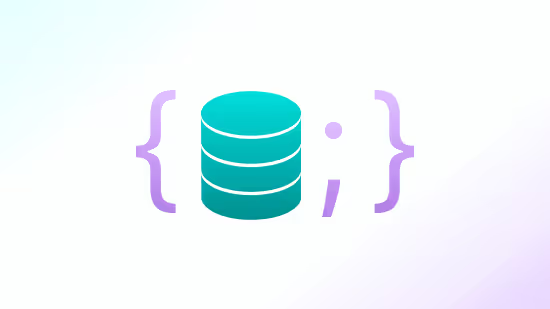Best test data management solutions

Test Data Management platforms: average scores
* Average scores for these test data management solutions are based on review ratings from G2.com and Gartner Peer Insights. Last updated July 8, 2024.
Criteria for comparing test data management solutions
Choosing the right Test Data Management (TDM) software is crucial for maintaining the balance between development velocity and data security in testing. To assess the different test data management solutions available in the market as alternatives to Tonic.ai, it's important to consider several key criteria that reflect the needs of modern development environments. For this developer tools comparison, we will use the following:
- Test data quality: This refers to how closely de-identified test data mimics production data in terms of structure, behavior, and variability, without compromising sensitive information. Capabilities to achieve high quality include complex data masking and synthetic data generation.
- Native data source connectors: The ability of the test data management platform to seamlessly connect with various data sources directly affects its adaptability and efficiency.
- Subsetting: The capability to create smaller, manageable versions of data sets that are still representative of the whole, while being faster and less costly to use.
- Ephemeral data environments: The ability to provision temporary test databases that can be set up and torn down quickly, minimizing costs and resource usage.
- Ease of use: This includes the user interface design, the learning curve required to operate the software, and the level of technical support provided.
- Performance: The efficiency of the software in handling large datasets and its speed in generating and managing test data.
These criteria will guide our evaluation of various test data management solutions to determine which tool best fits the needs of developers and organizations looking to enhance their testing frameworks with high-quality, secure test data generation.
Tonic.ai
4.5 Average score • ( G2: 4.3 | Gartner Peer Insights: 4.7 )
Tonic.ai stands out among test data management platforms by offering a comprehensive suite of AI-driven data solutions built with developers in mind, to make it easy to generate and provision secure and realistic test data.
- Test data quality: Tonic.ai excels in creating high-fidelity synthetic data that mirrors production data closely, thanks to its sophisticated and versatile data synthesis and de-identification technologies. Capabilities like cross-database consistency, column linking, and flexible generators enable teams to maintain the structure, referential integrity, and underlying business logic of their data.
- Native data source connectors: Offering comprehensive database support, Tonic seamlessly integrates with a variety of data sources. The platform connects natively to the leading relational databases, data warehouses, NoSQL data stores, a growing list of file types, and also Salesforce.
- Subsetting: With a patented solution, Tonic is industry leading in the subsetting capabilities it offers, allowing users to tailor the size and scope of their datasets according to the specific needs of their testing environments.
- Ephemeral data environments: Tonic’s Ephemeral solution simplifies the management of temporary databases, allowing for quick setup and teardown with minimal overhead.
- Ease of use: Built with developers in mind, the platform’s intuitive UI and no-code experience are frequently cited for ease of use. Tonic also offers a full API for CI/CD automation.
- Performance: Tonic is specifically architected to scale with your data for optimized performance, efficiently handling large volumes of data in data warehouses and lakehouses without introducing delays.
K2View
4.4 Average score • ( G2: 4.4 | Gartner Peer Insights: 4.4 )
K2View is an established player in the data integration space that more recently added data masking capabilities to enter the field of TDM. As a result of its origins, its test data management platform utilizes a less common path of entity modeling, which is ideal for data integration but can introduce complexity in test data generation.
- Test data quality: The first step toward quality data in K2View is building out an entity model for your data, which requires you to identify and configure all relevant relationships across your databases up front. It will ensure consistency and referential integrity within your output data but at a cost in terms of up-front configuration time.
- Native data source connectors: K2View can connect to most data sources. As a result of their entity model approach, their platform transforms connected data into their proprietary data format, rather than working natively in the format of the connected data source.
- Subsetting: K2View’s subsetter is also tied to entity modeling, allowing you to subset based on specific business entities. It is unclear whether you can craft a subset based purely on a percentage or size to which you want to shrink your database down.
- Ephemeral data environments: This is not a focus of K2View, given their emphasis on continuous data integration; they do not appear to offer a solution in this space.
- Ease of use: The platform targets technically proficient users, capable of managing their data fabric approach.
- Performance: Once fully configured, the platform performs at speed with large data environments.
IBM Optim
4.35 Average score • ( G2: 4.6 | Gartner Peer Insights: 4.1 )
IBM Optim is an established player known for its data management and archiving capabilities.
- Test data quality: IBM Optim offers standard data masking capabilities, but runs into limitations when it comes to more complex and larger scale data, making it difficult to maintain realism and relationships across tables and databases. Its support is limited when it comes to maintaining input-to-output consistency and de-identifying data types like JSON and Regex.
- Native Data Source Connectors: Strong integration capabilities with IBM’s suite of products, though integration with non-IBM products can be less straightforward. Additionally, it does not appear to support connecting to flat files.
- Subsetting: Not a focus of the platform; users have reported difficulties in ensuring referential integrity when subsetting in IBM Optim, requiring them to manually configure relationships between tables.
- Ephemeral data environments: Not a core feature of IBM Optim, with more focus on persistent data management solutions.
- Ease of use: Users cite an upfront learning curve with unclear documentation. Manual scripts are also often needed to customize the platform to meet your use cases..
- Performance: Built for high performance in large-scale environments, though some users have flagged limitations on the number of records the platform can process per table.
Informatica Test Data Management
4.1 Average score • ( G2: 4.1 | Gartner Peer Insights: 4.1 )
Informatica is a leader in data integration that acquired a test data management solution, adding TDM to its capabilities.
- Test data quality: Informatica's strong emphasis on data privacy sometimes results in a trade-off with data utility and the agility needed to rapidly adjust test data to shifting development requirements.
- Native data source connectors: With data integration at its core, the platform boasts extensive connectivity options.
- Subsetting: Relationships between tables across larger databases must be configured manually, and subsetting runs have been cited as slow to complete.
- Ephemeral data environments: The software provides capabilities for creating and managing transient data environments.
- Ease of use: Requires a level of expertise to fully leverage its capabilities, potentially steepening the learning curve. It also lacks an API for better automation.
- Performance: The platform is capable of handling large data volumes.
Delphix
4.05 Average score • ( G2: 3.5 | Gartner Peer Insights: 4.6 )
Delphix is a legacy player in the TDM space, known for offering data masking and a version of copy-on-write that it calls “data virtualization” (not to be confused with the data virtualization offered by data integration players).
- Test data quality: As early TDM players, Delphix’s prioritized data privacy over data utility in their masking capabilities. To date, the platform is limited in its ability to ensure input-to-output consistency and referential integrity, and it is unable to realistically process complex data types like Regex data.
- Native data source connectors: It supports a range of traditional data sources but is unable to connect natively to more modern cloud-based data sources, like Snowflake or Databricks.
- Subsetting: Delphix’s subsetter works at the table level only, due to its limitations in mapping relationships and preserving referential integrity between tables. It is unable to subset at the database level.
- Ephemeral data environments: Historically, Delphix has provided virtual databases by way of its “data virtualization” capabilities. These databases are isolated, but are not configured to be ephemeral in an automated way.
- Ease of use: Users have flagged that the platform’s UI is outdated and difficult to use. Features that are lacking out-of-the-box result in a necessity for custom scripts and workarounds.
- Performance: The platform runs into performance issues when processing larger datasets, due to the complexity required in configuring de-identification rules. Users have run into issues processing data concurrently in an efficient way.
Redgate Test Data Manager
3.5 Average score • ( G2: 3.5 | Gartner Peer Insights: - )
Redgate is a long-standing provider of developer tools which recently consolidated a number of its tools into a single test data management platform.
- Test data quality: Redgate offers basic data masking capabilities for common data types. It is unable to process complex data types like JSON or Regex data, and it does not appear to support input-to-output consistency or to maintain referential integrity.
- Native data source connectors: At the time of this writing, Redgate supports a handful of relational databases, including SQL Server, PostgreSQL, MySQL, and Oracle.
- Subsetting: The tool offers basic subsetting capabilities, but it is unclear how they preserve relationships across tables or maintain referential integrity.
- Ephemeral data environments: Redgate offers data provisioning via containers, making it possible to spin up isolated datasets, but it does not appear to offer functionality to spin down those datasets.
- Ease of use: The current UI offers access to a limited set of the platform’s capabilities, requiring much of the configuration and maintenance to be managed via a CLI.
- Performance: Due to limited reviews and its relatively recent appearance on the market, not much is known about the platform’s overall performance.
DISCLAIMER
This information is collected from public sources and vendor websites, and is current as of 6/4/2024; it is not our final verdict or opinion. The information, in some cases, could be outdated. You should contact the above test data management solutions directly to get recent information. If there is missing information, please contact the website owner.
Chiara Colombi is the Director of Product Marketing at Tonic.ai. As one of the company's earliest employees, she has led its content strategy since day one, overseeing the development of all product-related content and virtual events. With two decades of experience in corporate communications, Chiara's career has consistently focused on content creation and product messaging. Fluent in multiple languages, she brings a global perspective to her work and specializes in translating complex technical concepts into clear and accessible information for her audience. Beyond her role at Tonic.ai, she is a published author of several children's books which have been recognized on Amazon Editors’ “Best of the Year” lists.


.svg)
.svg)





















.svg)




